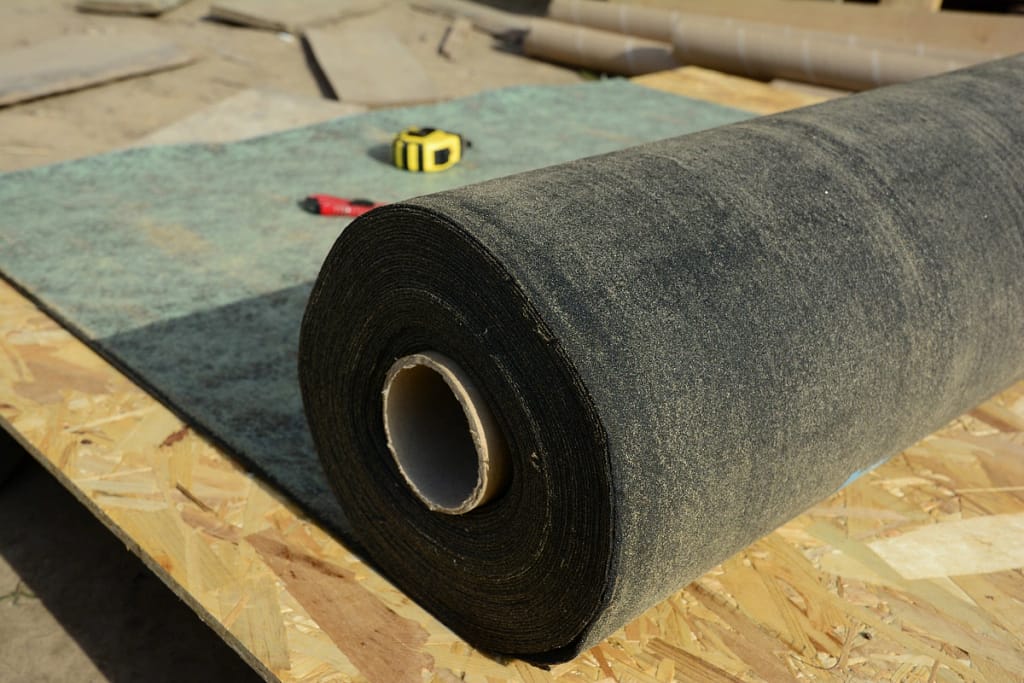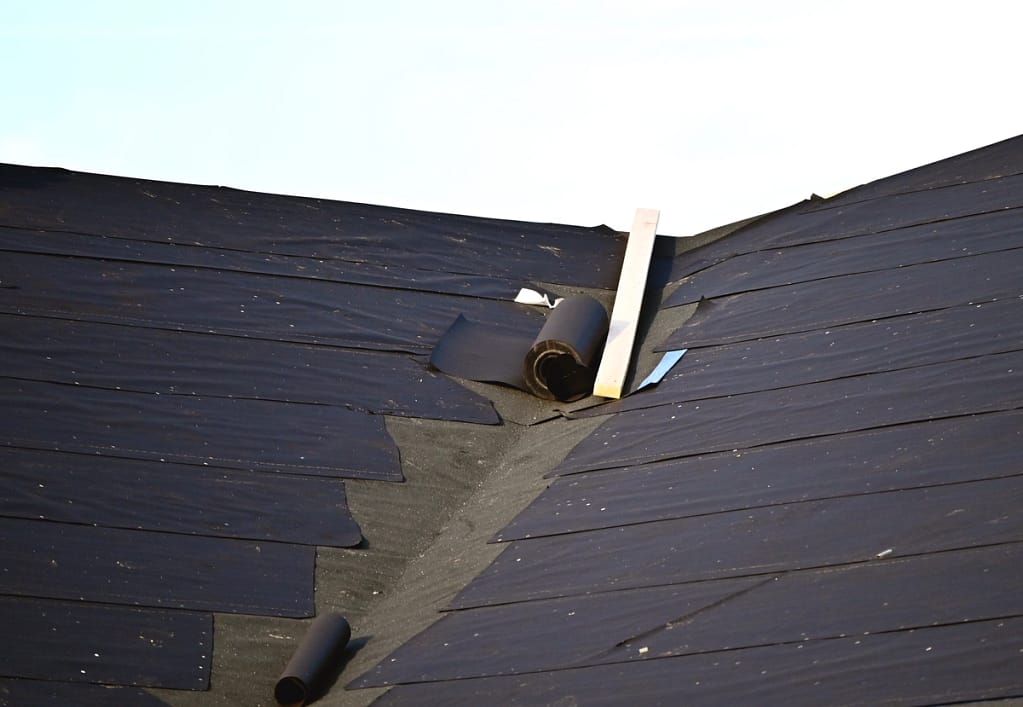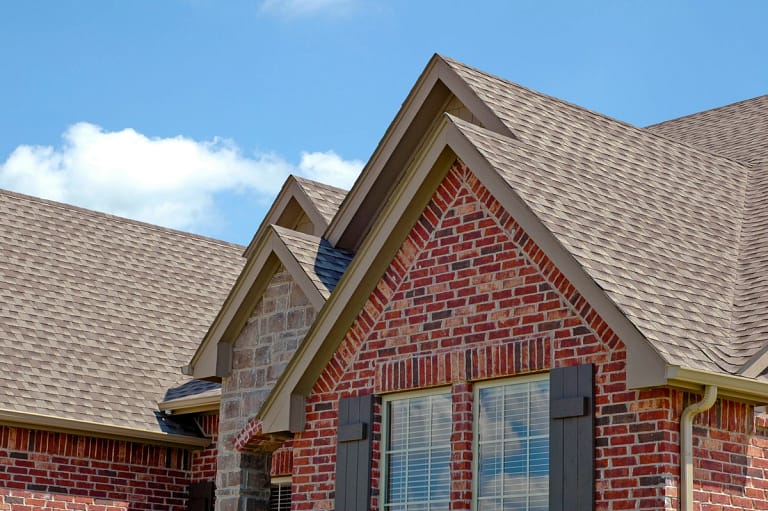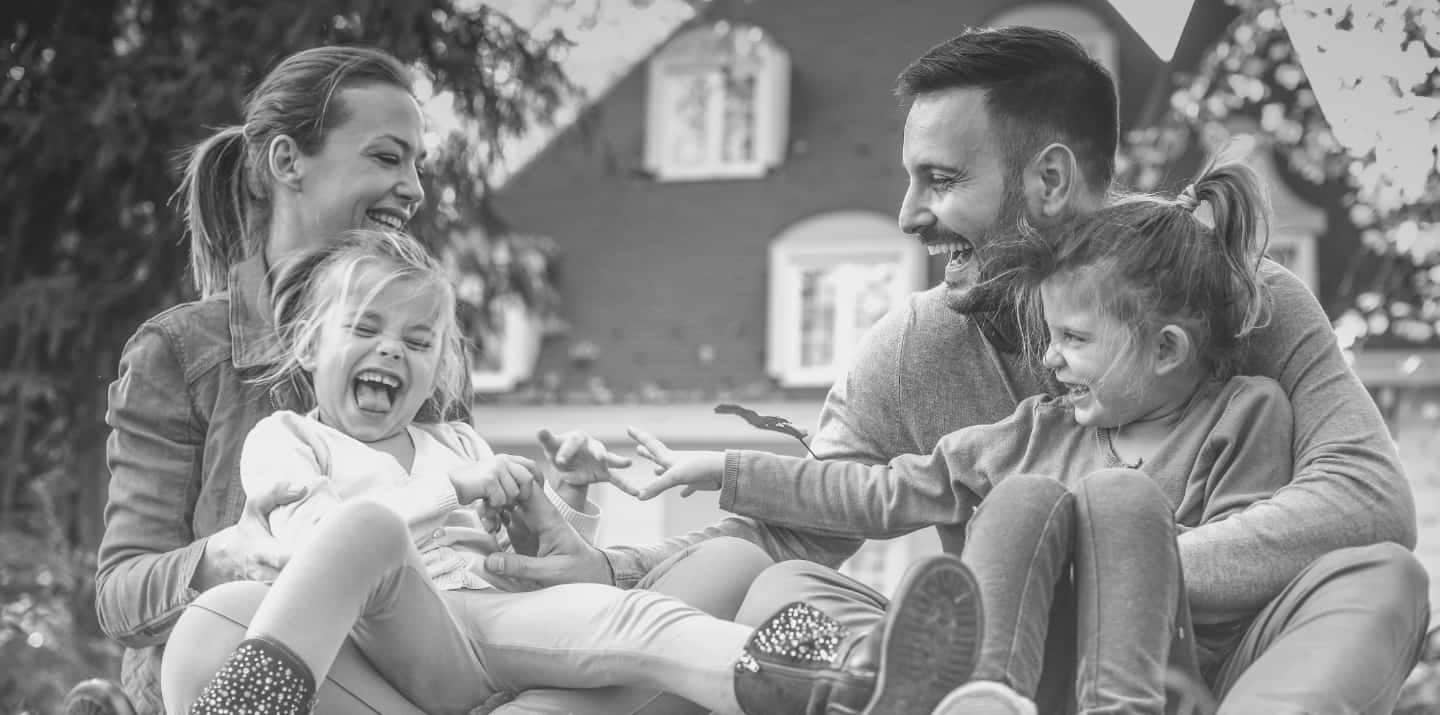When it comes to roofing, most homeowners focus on the visible elements like shingles. One area that tends to go unnoticed? Your underlayment!
Roof underlayment is a hidden but essential component that acts as a protective barrier between your roof deck and the outer roofing material. And when it comes time for a replacement, you’ll have several different roof underlayment types to choose from. Not sure which one is right for you? In this blog post, we will dive deep into:
What roof underlayment is
- The different types available
- Their pros and cons
- The cost of installation
- When it’s time to replace your underlayment
Keep reading to become an expert on roofing underlayment!

What is Roof Underlayment?
Roof underlayment, also known as roofing felt or roofing paper, is a layer of material that is installed between the roof deck and the outer roofing material, such as shingles, tiles, or metal sheets. Its primary purpose is to provide an additional level of protection against moisture infiltration, enhance thermal insulation, and prevent damage to the roof deck caused by condensation. Roof underlayment also plays a crucial role in increasing the overall longevity and performance of your roofing system.
3 Different Types of Roof Underlayment
1) Asphalt-Saturated Felt (Tar Paper):
Asphalt-saturated felt, commonly referred to as tar paper, has been a staple in the roofing industry for decades. It is made from a base material, typically fiberglass or organic felt, which is impregnated with asphalt to make it waterproof. Tar paper comes in various weights, with the heavier options offering better durability and protection.
✅ Pros:
- Cost-effective: Asphalt-saturated felt is one of the most affordable roofing underlayment options.
- Good water resistance: It provides a basic level of moisture protection.
- Easy installation: Tar paper is lightweight and easy to handle during installation.
❌ Cons:
- Limited lifespan: It has a relatively shorter lifespan compared to other underlayment materials, typically ranging from 10 to 20 years.
- Vulnerable to tearing: Tar paper is not as durable as some alternatives and can tear more easily during installation or severe weather conditions.
- Less thermal resistance: It provides limited thermal insulation, which may not be ideal for regions with extreme temperature variations.
2) Synthetic Underlayment
Synthetic underlayment is a more modern and technologically advanced option compared to traditional tar paper. It is typically made from polymers such as polyethylene or polypropylene and is designed to offer superior performance in various weather conditions.
✅ Pros:
- Excellent durability: Synthetic underlayment is highly resistant to tearing and damage during installation.
- Longer lifespan: It can last significantly longer, often up to 50 years or more, compared to asphalt-saturated felt.
- Enhanced waterproofing: Synthetic underlayment provides superior waterproofing capabilities, ensuring long-term protection against moisture infiltration.
- Lightweight: It is lightweight and easy to handle during installation.
❌ Cons:
- Higher initial cost: Synthetic underlayment tends to be more expensive than traditional tar paper.
- Reduced breathability: Some synthetic underlayments may have lower breathability, which can potentially trap moisture in the roof structure.
3) Rubberized Asphalt Underlayment
Rubberized asphalt underlayment is another advanced roofing underlayment option that combines the benefits of both asphalt and synthetic materials. It features a rubberized asphalt coating that provides excellent water resistance and durability.
✅ Pros:
- Exceptional waterproofing: Rubberized asphalt underlayment offers superior protection against water infiltration.
- High durability: It is less prone to tearing or damage during installation.
- Enhanced thermal resistance: The rubberized layer can provide additional thermal insulation for your roof.
- Extended lifespan: Rubberized asphalt underlayment typically has a longer lifespan, often exceeding 30 years.
❌ Cons:
- Higher cost: This type of underlayment can be more expensive than traditional tar paper or synthetic underlayment.
- Weight: Rubberized asphalt underlayment can be heavier than other options, potentially requiring additional support for the roof structure.
Cost to Install Roof Underlayment

The cost of installing roof underlayment can vary significantly depending on several factors, including the type of underlayment, the size and complexity of your roof, and the labor costs in your area. Here’s a rough estimate of the installation costs for different types of roof underlayment:
Asphalt-Saturated Felt (Tar Paper):
- Cost: $0.15 to $0.50 per square foot
- Labor: $0.20 to $0.40 per square foot
Synthetic Underlayment:
- Cost: $0.30 to $0.70 per square foot
- Labor: $0.20 to $0.40 per square foot
Rubberized Asphalt Underlayment:
- Cost: $0.50 to $1.00 per square foot
- Labor: $0.20 to $0.40 per square foot
These estimates cover the material costs and labor for installation. Keep in mind that these costs can vary widely based on your location, the quality of materials used, and the complexity of the roofing project. It’s essential to obtain quotes from local roofing contractors to get a more accurate assessment of the installation costs for your specific situation.
When to Replace Your Roof Underlayment
Roof underlayment, like any roofing component, has a finite lifespan and will eventually require replacement. Here are some signs that indicate it may be time to replace your roof underlayment:
- Age: Most roof underlayment materials have a recommended lifespan. If your underlayment is nearing the end of its expected lifespan, it’s a good idea to consider replacement, even if it appears to be in decent condition.
- Visible damage: Inspect your underlayment for visible signs of damage, such as tears, cracks, or water stains. Any noticeable damage can compromise its effectiveness and should be addressed promptly.
- Roof leaks: If you experience roof leaks or water infiltration, it’s crucial to inspect the underlayment as it may be compromised. Addressing the issue early can prevent more extensive damage to your roof structure.
- Roof replacement or repair: When you’re planning to replace or repair your roofing material (shingles, tiles, etc.), it’s an ideal time to replace the underlayment as well. This ensures that your entire roofing system is in good condition.
- Roofing inspection: Regular roofing inspections by professionals can help identify any underlayment issues early on. If an inspection reveals problems with the underlayment, it’s wise to schedule its replacement.
Work With a Trusted Roofing Contractor
Understanding the different types of underlayment, their pros and cons, installation costs, and knowing when to replace them can help you make informed decisions when it comes to roofing maintenance and replacement. Investing in quality underlayment can provide long-term benefits and peace of mind for your home. Still not sure which types of roofing underlayment are right for you? Best Exteriors can help! Contact us today to get a free consultation!




